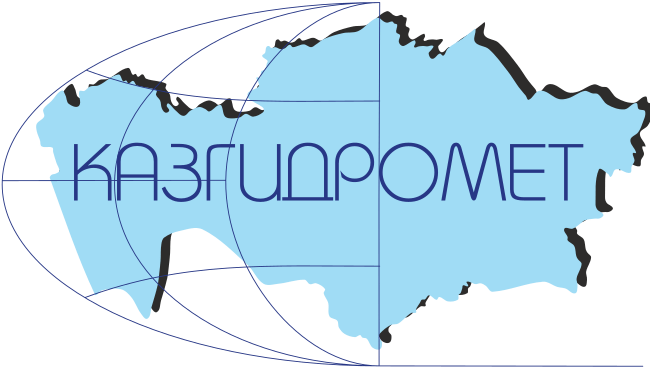ASSESSMENT OF SPRING FLOOD RUNOFF IN THE ZHAIYK-CASPIAN WATER MANAGEMENT BASIN: CURRENT STATE AND SCENARIO FORECAST
DOI:
https://doi.org/10.54668/2789-6323-2025-119-4-95-109Keywords:
maximum runoff, river runoff transformation, spring flood, scenario projection, CMIP6Abstract
This study presents a comprehensive analysis of the characteristics of spring runoff in the Zhaiyk-Caspian water management basin for the modern period, as well as an assessment of projected changes for the horizons of 2030, 2040, and 2050 based on CMIP6 climate scenarios (SSP3-7.0 and SSP5-8.5). The analysis of observations from 34 hydrological stations revealed a decrease in spring runoff volume of up to 35 %, a reduction in flood duration, and a decline in peak discharge on certain rivers of up to 45 %. It was established that rising air temperatures, an increased frequency of thaws, and reduced autumn soil moisture contribute to lower peak discharges and a transformation of the seasonal runoff regime. Scenario-based projections demonstrated pronounced spatial heterogeneity: some rivers are expected to experience an increase in maximum runoff of up to 72 %, while others show a steady decrease of up to 35 %. These findings highlight the necessity of transitioning to an adaptive water resources management system that takes into account the regional characteristics of river basins and the high sensitivity of small and medium-sized streams to climate change.
References
Tursunova A., Nurbatsina A., Salavatova Z., Huthoff F. (2025). Sustainability challenges in Kazakhstan’s river systems: assessing climate-induced hydrological changes. Sustainability. Vol. 17, № 8. P. 3405. https://doi.org/10.3390/su17083405.
Frolova N. L., Agafonova S. A., Kireeva M. B., Povalishnikova E. S., Pakhomova O. M. (2017). Recent changes of annual flow distribution of the Volga Basin rivers. Geography, Environment, Sustainability. Vol. 10. P. 28–39. https://doi.org/10.24057/2071-9388-2017-10-2-28-39.
Wang P., Shpakova R. N. (2022). Complex streamflow responses to climate warming in five river basins in South Yakutia, Russia. Frontiers in Environmental Science. Vol. 10. P. 1033943. https://doi.org/10.3389/fenvs.2022.1033943.
Медведев А. И. Байесовы оценки изменения стока российских рек в XXI веке на основе CMIP6 // Известия РАН. Физика атмосферы и океана. – 2023. – Т. 59, № 7. – С. 857–871.
Магрицкий Д. В., Евстигнеев В. М., Юмина М. Н., Торопов П. А., Кенжебаева А. Ж., Ермакова Г. С. Изменения стока в бассейне реки Урал // Вестник Московского университета. Серия 5. География. – 2018. – № 1. – С. 90–101.
Сивохип Ж. Т., Павлейчик В. М. Современные тенденции внутригодового распределения речного стока в бассейне реки Урал // Известия Иркутского государственного университета. Серия: Науки о Земле. – 2020. – Т. 33. – С. 112-123. – https://doi.org/10.26516/2073-3402.2020.33.112
Медеу А. Р., Махмудова Л. К., Мырзахметов А. Б., Загидуллина А. Р., Канай М. А. Паводковая ситуация на реке Жайык (Урал) в 2024 году // География и водные ресурсы. – 2024. – № 4. – С. 14–23. – https://doi.org/10.55764/2957-9856/2024-4-14-23.35
Терехов А. Г., Саиров С. Б., Абаев Н. Н., Сагатдинова Г. Н., Амиргалиев Е. Н. О возможных причинах исключительно больших весенних паводков 2024 года в Казахстане // Современные проблемы дистанционного зондирования Земли из космоса. – 2024. – Т. 21. – № 3. – С. 331–338. – https://doi.org/10.21046/2070-7401-2024-21-3-331-338
Danilovich I. S., Loginov V. F., Groisman P. Y. (2023). Changes of Hydrological Extremes in the Center of Eastern Europe and Their Plausible Causes. Water. Vol. 15, № 16. Article 2992. https://doi.org/10.3390/w15162992
Laiskhanov S., Sharapkhanova Z., Myrzakhmetov A., Levin E., Taukebayev O., Nurmagambetuly Z., Kaster S. (2025). Geo-Ecological Analysis of the Causes and Consequences of Flooding in the Western Region of Kazakhstan. Urban Science. Vol. 9, № 1. Article 20. – https://doi.org/10.3390/urbansci9010020
Dottori F., Szewczyk W., Ciscar J.-C., Zhao F., Alfieri L., Hirabayashi Y. (2018). Increased human and economic losses from river flooding with anthropogenic warming. Nature Climate Change. Vol. 8, № 9. P. 781–786. https://doi.org/10.1038/s41558-018-0257-z
Michalek A. T., Villarini G., Kim T., Quintero F., Krajewski W. F., Scoccimarro E. (2023). Evaluation of CMIP6 HighResMIP for hydrologic modeling of annual maximum discharge in Iowa. Water Resources Research. Vol. 59. https://doi.org/10.1029/2022WR034166
Suram A., Anand R. P., Vema V. K. (2024). Catchment response to climate change under CMIP6 scenarios: a case study of the Krishna River Basin. Journal of Water and Climate Change. Vol. 15, № 2. P. 476–498. https://doi.org/10.2166/wcc.2024.442
Wu Y., Miao C., Fan X., Gou J., Zhang Q., Zheng H. (2022). Quantifying the Uncertainty Sources of Future Climate Projections and Narrowing Uncertainties with Bias Correction Techniques. Earth’s Future. Vol. 10. https://doi.org/10.1029/2021EF002630
Fallah B., Rostami M., Russo E., Harder P., Menz C., Hoffmann P., Didovets I., Hattermann F. F. (2025). Climate model downscaling in central Asia: a dynamical and a neural network approach. Geoscientific Model Development. Vol. 18. P. 161–180. https://doi.org/10.5194/gmd-18-161-2025
Smagulov Z., Makhmudova L., Alimkulov S., Talipova E., Zagidullina A., Birimbayeva L., Sailaubek A. (2025). Transformation of seasonal distribution of river flow in the Zhaiyk-Caspian water basin under changing climate conditions. Journal of Water and Climate Change. https://doi.org/10.2166/wcc.2024.537.
Frieler K., Lange S., Piontek F., Reyer C. P. O., Schewe J., Warszawski L., Zhao F., Chini L., Denvil S., Emanuel K., Geiger T., Halladay K., Hurtt G., Mengel M., Murakami D., Ostberg S., Popp A., Riva R., Stevanovic M., Suzuki T., Volkholz J., Burke E., Ciais P., Ebi K., Eddy T. D., Elliott J., Galbraith E., Gosling S. N., Hattermann F., Hickler T., Hinkel J., Hof C., Huber V., Jägermeyr J., Krysanova V., Marcé R., Müller Schmied H., Mouratiadou I., Pierson D., Tittensor D. P., Vautard R., van Vliet M., Biber M. F., Betts R. A., Bodirsky B. L., Deryng D., Frolking S., Jones C. D., Lotze H. K., Lotze-Campen H., Sahajpal R., Thonicke K., Tian H., Yamagata Y. (2017). Assessing the impacts of 1.5 °C global warming – simulation protocol of the Inter-Sectoral Impact Model Intercomparison Project (ISIMIP2b). Geoscientific Model Development. Vol. 10. P. 4321–4345. https://doi.org/10.5194/gmd-10-4321-2017
Сикан А. В. Методы статистической обработки гидрометеорологической информации. – Санкт-Петербург: Изд-во РГГМУ, 2007. – 279 с.
Helsel D. R., Hirsch R. M. (2020). Statistical Methods in Water Resources (U.S. Geological Survey Techniques and Methods, book 4, chap. A3). Reston, VA: U.S. Geological Survey, 454 p. https://doi.org/10.3133/tm4A3
Владимиров А. М. Факторы, определяющие возникновение экстремальных расходов и уровней воды половодья // Учёные записки РГГМУ. – 2009. – № 9. – С. 22–39.
Дмитриева В. А., Нефедова Е. Г. Гидрологическая реакция на меняющиеся климатические условия и антропогенную деятельность в бассейне Верхнего Дона // Вопросы географии. Гидрологические изменения. – 2018. – № 145. – С. 285–297.
Махмудова Л., Талипова Э., Мырзахметов А., Биримбаева Л., Тұрсынбай А., Әліпбек Ә. Климатические характеристики оттепелей на территории Жайык-Каспийского водохозяйственного бассейна // Journal of Geography and Environmental Management. – 2025. – Т. 75, № 4. – С. 80–91.
Downloads
Published
How to Cite
Issue
Section
License
Copyright (c) 2025 Саят Алимкулов, Ляззат Махмудова, Эльмира Талипова, Жанибек Смагулов, Ақгүлім Сайлаубек

This work is licensed under a Creative Commons Attribution-NonCommercial 4.0 International License.





